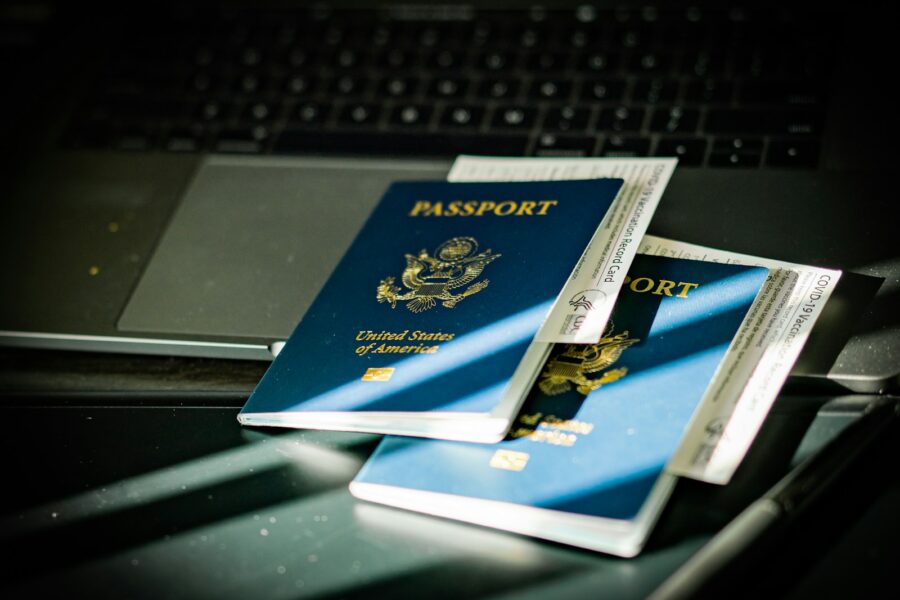What is the Surinder Singh Route?
When researching UK immigration options, I stumbled upon a less conventional pathway known as the Surinder Singh Route. This particular method ties into United Kingdom immigration laws but operates under the radar of more talked-about routes. It’s pivotal for family members of British citizens who’ve lived in another European Economic Area (EEA) country and now wish to return to the UK with their non-EEA family member.
The genesis of the Surinder Singh Route comes from a landmark case at the European Court of Justice. It confirmed that under certain conditions, UK nationals exercising their freedom of movement rights in another EEA country could bring their family members back to the UK under EU law, rather than the stricter UK immigration rules. This was revolutionary for families split between the UK and other European nations.
To use this route, the UK national must have genuinely made another EEA country their home. This doesn’t mean a brief holiday but establishing life there—working, studying, or self-sufficient living—for a considerable period. It implies that integration into the host country is crucial; think along the lines of language acquisition and active community participation.
My takeaways from delving into United Kingdom immigration laws are that while the Surinder Singh Route offers a brilliant leverage point for certain families, it’s surrounded by specific requirements that need careful consideration. For instance:
- The British citizen must prove they’ve moved their center of life to another EEA country.
- The move must not be seen as an attempt to circumvent UK immigration rules.
- Evidence of integration in the host country is paramount.
While diving into the complexities of UK immigration, the Surinder Singh Route stands out as a beacon of hope for some, providing a tangible solution amidst stringent immigration policies. It’s a testament to the interplay between national and EU laws, offering a unique but navigable path for families.
The Benefits of the Surinder Singh Route
Exploring through United Kingdom immigration can sometimes feel like exploring a complex maze. But, pathways like the Surinder Singh Route offer a beacon of hope for families looking to live together in the UK. I’ve firsthand witnessed and researched the numerous advantages this pathway provides, making it an option worth considering for anyone looking to simplify their UK immigration journey.
First and foremost, the Surinder Singh Route sidesteps the more stringent income requirements typically imposed by the UK immigration system. For countless families, meeting the financial threshold is a significant barrier. This pathway, focusing on genuine integration into another European Economic Area (EEA) country, makes it feasible for more families to reunite in the UK without the stress of proving substantial income levels.
Another standout benefit is the focus on family unity. In an era where immigration policies seem to get tighter, the Surinder Singh Route shines as a testament to the importance of keeping families together. It acknowledges that British citizens exercising their freedom of movement should not have to choose between their country and their loved ones.
It’s also worth noting the impact of this route on integration. By spending time in another EEA country, families have a unique opportunity to immerse themselves in a different culture, language, and community. This experience not only enriches their lives but also fosters a smoother transition upon returning to the UK. The requirement for genuine integration ensures that those who return to the UK are well-prepared to contribute positively to their communities.
The table below summarizes the main benefits of the Surinder Singh Route:
| Benefit | Description |
|---|---|
| Lower Financial Requirements | Avoids strict income thresholds required by standard UK immigration path |
| Focus on Family Unity | Keeps families together, prioritizing personal over economic criteria |
| Enhanced Integration and Cultural Immersion | Encourages genuine integration in an EEA country before returning to the UK |
In my journey to understand and navigate the intricacies of UK immigration, it’s become clear that options like the Surinder Singh Route can significantly ease the process for families. While it requires genuine commitment and integration into another EEA country, the benefits it offers align closely with what many families seek – unity, accessibility, and a smoother path to living in the UK.
How Does the Surinder Singh Route Work?
When exploring the intricacies of United Kingdom immigration, it’s fascinating to investigate into the Surinder Singh Route—a unique pathway that simplifies the process for certain families. I’ve navigated through countless immigration regulations, and this particular route always stands out for its distinct approach to UK immigration. Let me walk you through how it operates.
First, it’s pivotal that a British citizen moves to another European Economic Area (EEA) country. This isn’t just a brief holiday; the move should be substantial, meaning the British citizen must work, study, or be self-sufficient in that EEA country for a considerable period. The idea is to center your life there, integrating into the local community and embracing the culture. This period abroad is crucial as it forms the backbone of the Surinder Singh Route.
During or after this time in another EEA country, the British citizen can decide to return to the UK. Here’s where the route shines: they can bring their non-EEA family members with them. This bypasses the more stringent domestic UK immigration rules that would typically apply. It’s a game-changer for many families, offering a smoother transition back to the UK.
Documentation plays a key role in the process. You’ll need to prove your residence in the EEA country was genuine, covering aspects like employment, rental or property ownership, and reasons for moving back to the UK. Each document is a piece of the puzzle, illustrating your life abroad and your decision to return.
Understanding the Surinder Singh Route has been a revelation in my journey through the labyrinth of UK immigration laws. It exemplifies the UK’s commitment to family unity and offers a practical solution for British citizens looking to bring their loved ones to the UK.
Who Can Qualify for the Surinder Singh Route?
When diving into the specifics of UK immigration, the Surinder Singh Route stands out as a unique pathway, but it’s not available to everyone. To take advantage of this route, specific qualifications need to be met. I’ve outlined these criteria to help you determine if this path is right for you or your family members.
Firstly, the core aspect of qualifying for this route revolves around a British citizen who has exercised their freedom of movement rights by living and working or studying in another European Economic Area (EEA) country. This isn’t just a short vacation; there’s an expectation for the British citizen to have genuinely integrated into the EEA country, typically for a period of at least three months.
Here’s a simplified checklist for eligibility:
- British citizenship
- Residency in an EEA country other than the UK
- Genuine integration in the EEA country (employment, study, or self-sufficiency)
But, it’s not just the British citizen whose eligibility matters. Their non-EEA family members aiming to move to the UK with them must also meet certain criteria. This includes spouses, civil partners, direct descendants (children, grandchildren), and dependent relatives. The relationship must be formed before returning to the UK and must continue to exist.
Summarizing, the Surinder Singh Route provides a lifeline for United Kingdom immigration for families who’ve lived in the EEA but find traditional immigration pathways daunting due to strict requirements. If you’re a British citizen with time spent in another EEA country or a family member of one, this route might be the key to easing your UK immigration process.
Case Studies: Successful Applications of the Surinder Singh Route
Exploring the complexities of UK immigration, I’ve encountered countless stories of families and individuals who have successfully utilized the Surinder Singh Route to make the United Kingdom their home. These case studies highlight the practical application of this immigration pathway and serve as a beacon of hope for those feeling overwhelmed by the traditional routes.
John and Maria’s Journey: One such story is that of John, a British citizen, and Maria, his Colombian wife. Faced with the stringent requirements of united kingdom immigration for non-EEA family members, they decided to move to Spain for two years. During this time, not only did John integrate into the local community by taking up employment, but they also welcomed their first child. Upon deciding to return to the UK, their application under the Surinder Singh Route was smooth, emphasizing the genuine and significant integration into another EEA country’s way of life.
Amit’s Relocation: Amit, a British software engineer, took a different approach. After several years working in the UK, he accepted a position in Ireland, moving with his Brazilian partner, Lucas. Living in Ireland, they engaged deeply with the local culture, attending language courses and participating in community events. After a year and a half, they applied to return to the UK under the Surinder Singh Route. Their thorough documentation of life in Ireland and continued relationship proved pivotal in their successful application.
These cases underline a Key Fact: The Surinder Singh Route requires genuine integration into the host EEA country’s society. It’s not merely about bypassing stringent UK immigration rules but about embracing another culture and making it part of your family’s journey.
What stands out in these stories is the diversity of experiences. From John and Maria’s family expansion to Amit and Lucas’s cultural immersion, the route offers a flexible yet tangible solution for those looking to navigate United Kingdom immigration more seamlessly. It’s a testament to how families can leverage their time in the EEA to fortify their case for moving to the UK, highlighting the importance of genuine integration and the continuity of family relationships.
Conclusion
Exploring the Surinder Singh Route has been an eye-opening journey for me. It’s clear that this pathway offers a unique opportunity for British citizens and their non-EEA family members to reunite in the UK under less stringent conditions than traditional immigration routes. The stories of John and Maria, along with Amit and Lucas, not only brought to life the practical application of this law but also underscored the importance of genuine integration into the host EEA country. It’s fascinating to see how this route emphasizes family unity and cultural immersion, providing a beacon of hope for many. For those feeling overwhelmed by the complexity of immigration laws, the Surinder Singh Route stands out as a viable and less daunting option. It’s a testament to the power of living and integrating into a new culture, and how it can pave the way back home with loved ones.


Leave a Comment